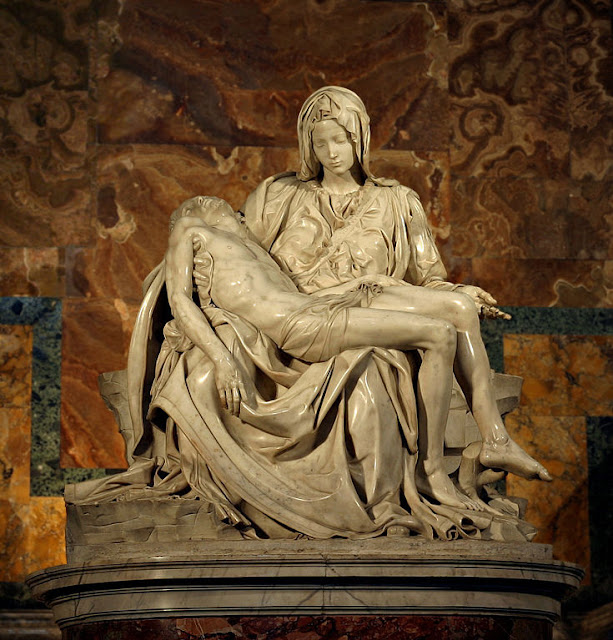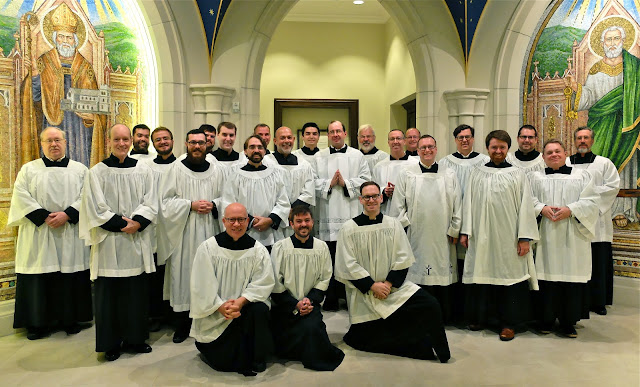Terms of Reference | The Things That Catholics Say

- Asperges: nothing to do with asparagus. Asperges refers to the rite of sprinkling the congregation and/or objects with holy water. The name comes from the first word of Psalm 51 in Latin (Asperges me) that is sung during the traditional form of the rite.
- Aspergillum: not to be confused with Aspirin, a painkiller. An aspergillum is an implement for sprinkling holy water.
- Curia: nothing to do with relief from disease. An an assembly, council, or court of church officials responsible for governance.
- Hypostatic: nothing to do with an electric charge built up when a priest walks across carpeting in the sanctuary. The Hypostatic Union refers to the union of the human and divine natures in Jesus Christ.
- Mantilla (man-tee-yuh): not for men, i.e., not a man-tilla. A traditional female liturgical lace or silk veil or shawl worn over the head and shoulders, often over a high hair ornament called a peineta.
- Nun. Not to be confused with 'none', i.e., someone who is religiously unaffiliated (or an agnostic or an atheist) or a liturgical hour of the Office of None (noh-na; ninth), around 3pm. A member of a religious community of women, especially a cloistered one, living under vows of poverty, chastity, and obedience.
- Paraclete (pah-rah-kleet): does not refer to a spike on soccer boots or golf shoes, nor to a tropical bird capable of mimicking human speech. Paraclete is a term that occurs five times in the Johannine texts of the New Testament. In Christian theology, the word commonly refers to the Holy Spirit and is translated as advocate, counsellor, or helper.
- Pew (pyoo): not an exclamation concerning the incense or the scent of a congregant. A church bench that typically includes a kneeler.
- Relics: does not refer to the oldest members of the congregation. Objects of religious significance, typically the physical remains or personal effects of a saint or other holy person, preserved for veneration.
- Surplice: not to be confused with surplus. The surplice is a loose white linen vestment varying from hip-length to calf-length, worn over a cassock by clergy, acolytes, and choristers.
- Tintinnabulum: nothing to do with a French cartoon album. A bell that is mounted on a pole and carried in processions.
- Zucchetto (zoo-ket-to): not a type of frozen dessert nor the name of a character in a story about a puppet that comes to life. A skullcap worn by clergy.
Popular Posts
Cantius/NLM [ 4 min read ] Some communicants make things interesting (...tricky, delicate, awkward, awesome...) at The Communion. Now don't get the wrong idea. Spoofing one's brothers' and sisters' behaviour is not meant to be proof of one's own moral or spiritual superiority. There's always a need to keep in mind the heart of another when lampooning (or celebrating) the externals, as curious or as laudable as those externals might be. The Moving Target: either the head or the tongue is moving a mile a minute. A good patener knows how to tame the fidget. See also #18: The Rubberneck. The Obstacle Course: fingertips touching the chin or mouth making it difficult for the patener to place the paten beneath the chin. The Curtain: face is completely covered with a veil. The NOFB (Not Open For Business): closed eyes, closed mouth; despite the need for a gentle prompt, typically a deeply reverent person. The Taker: wants to steal the Host from the priest. Note to commu...
... you rarely (if ever) hear the following phrases. "Party like it's A.D. 1570!" "We should sing more plainchant at this parish." "I'd like to thank the choir for their sublime rendition of the Mass For Five Voices by William Byrd." "I just love the way the four torchbearers process in with such dignity." "People treat the Host like a snack. I think it's time we went back to communion on the tongue." "My entire family goes to Confession every week." "We need a central Tabernacle on the altar." "The altar servers' lace cottas are so beautiful." "I just love Father Steve's sermons about the Real Presence and living a Eucharistic life." "People are leaving in droves for Saint Pius X Parish and the reverent Mass there. Do you think we're doing something wrong here at Harvey Milk Parish?" "I'm thrilled that the design for the new church includes a choir loft....
Two copies of the St. Gregory's Prayer Book (SGPB) arrived a few days ago. It is a lovely work replete with beautiful devotions drawn from the English Patrimony. Both Ordinariate and diocesan Catholics would do well to acquire a copy to access its riches. The SGPB is "a collaborative venture" of the three personal ordinariates and the Anglicanorum Coetibus Society . A blurb from the Ignatius Press site where one can go to purchase copies: https://www.ignatius.com/St-Gregorys-Prayer-Book-P3228.aspx The St Gregory's Prayer Book is a beautifully produced leatherette prayer book compiled by the Ordinariates established by Pope Benedict XVI and drawing on the riches of the Anglican liturgical heritage and the exquisite Cranmerian language of the Book of Common Prayer to further enrich the panoply of Catholic liturgy and devotion. The text includes ancient English collects, introits and hymns available together for the first time for the whole Church...
In a movie theatre, you genuflect before entering the aisle to take a seat. Riding a bus, sitting in class or at the doctor's office, and/or when watching TV, you rest your hands palms down on your thighs, finger tips at your knees. You can identify each and every variety of incense used in the Mass simply by its scent. You habitually wear black socks and black dress shoes... even when wearing shorts for gym class or at the beach. You turn a perfect right angle when entering a building. You have nightmares about serving Mass at the Los Angeles Religious Education Congress. You hear a bicycle bell ring and you drop to your knees. You can't resist the urge to lift a curtain from the bottom. You have a copy of Ceremonies of the Roman Rite Described by Adrian Fortescue on your smartphone for recreational reading. You have a copy of Ritual Notes (11th Edition) on your smartphone for recreational reading. As a torchbearer, you can carry a processional candle without spilling one dr...
The Ordinariate: Diocese of Unity The call to the beauty and goodness of the Ordinariate Catholic experience is the rather obvious invitation offered to all - the invitation of Christ. That is, to 'come and see' (St. John 1:39-41). Let's start with a poke in the eye of the idol of ecumenism, or a jab in the eye of some facsimile of the call to unity to the followers of Jesus Christ. Mr. Joseph Pearce wrote at the NCRegister that (o)nce we understand the new-fangled word ecumenism for the relativist and modernist thing that it is, we will see it as nothing less than the abandonment of the Faith in favor of the false gods of fashion. And once we see the thing for what it is, we will respond to the falsehoods of ecumenism with ecumenical truth. In this sense, we can see that being ecumenical is being evangelical, whereas ecumenism is the failure to evangelize. And in this sense, we can see and say that being truly ecumenical is to substitute ecumenism for you-come-in-ism. Mr. ...
Chair of Saint Peter, Instituted Acolytes, Class of 2017 In the Manual for the Instituted Acolyte & The Exercise of the Subdiaconal Ministry according to Divine Worship: The Missal, operative in the Personal Ordinariate of the Chair of St. Peter, His Excellency Bishop Steven Lopes provides a letter of introduction that begins: In his 1972 Motu Proprio entitled Ministeria Quaedum, Pope Paul VI reformed the so-called "minor orders" in the Church, the steps which would precede ordination to the diaconate and priesthood, In doing so, he recalls that certain ministries were established by the Church for the service of the People of God and as an assistance to to offering due worship to Almighty God. In this reform, the Holy Father restored these ministries to the faithful, uncoupling them from the preparation of men for the sacred priesthood. Pope Paul suppressed the office of subdeacon and other minor orders , though the ministry and service once reserved to s...
WISDOM 6
For they will be made holy who observe holy things in holiness.
1 JOHN 5
Any one who goes ahead and does not abide in the doctrine of Christ does not have God; he who abides in the doctrine has both the Father and the Son.
ST AUGUSTINE
The truth is like a lion; you don’t have to defend it. Let it loose; it will defend itself.
MARCUS AURELIUS
There is but one thing of real value - to cultivate truth and justice, and to live without anger in the midst of lying and unjust men.

.jpg)





Comments
Post a Comment
Your comments will be appreciated and posted if 1) they are on topic and 2) preserve decorum.
Stand by your word.